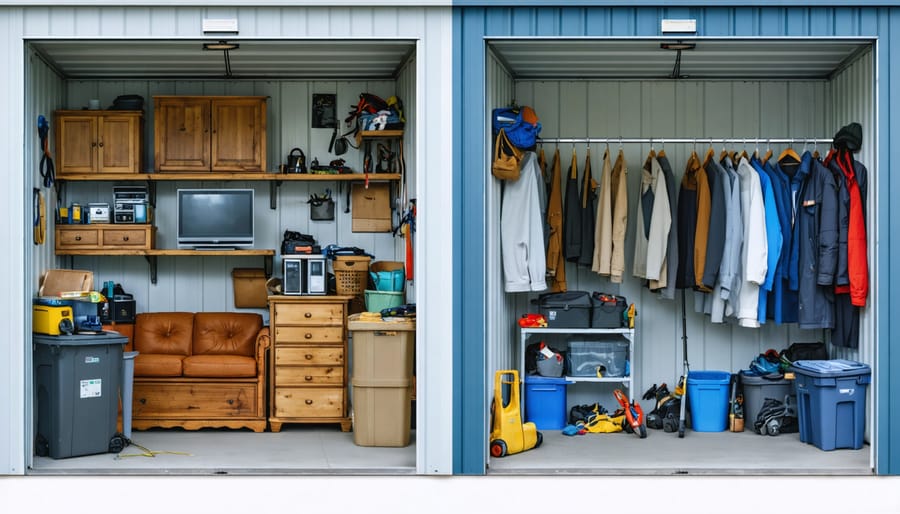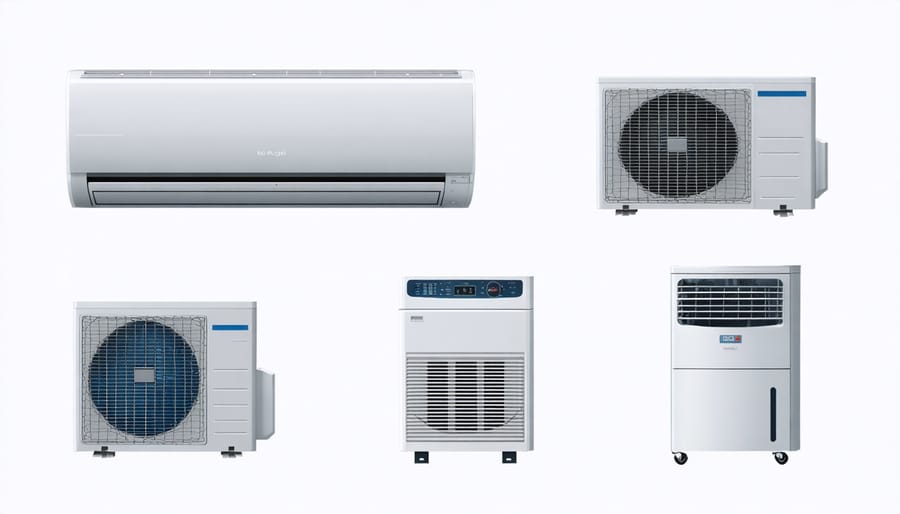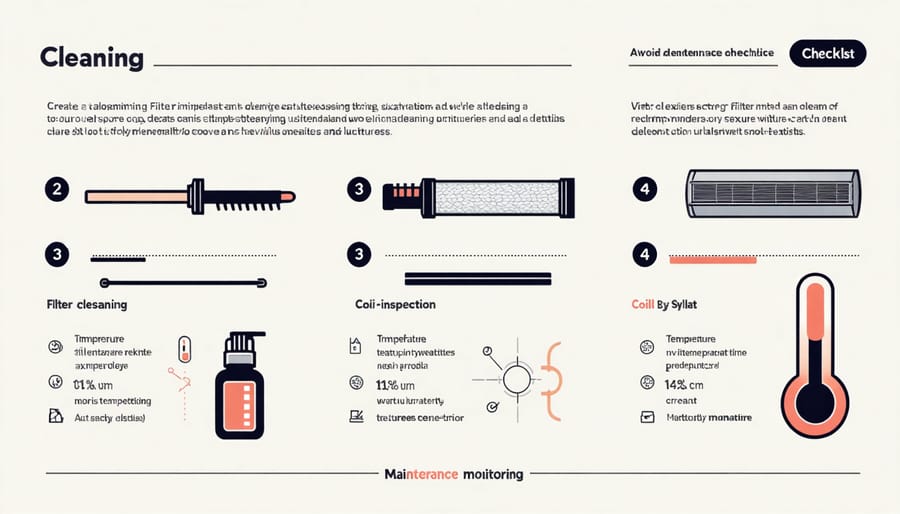Keep Your Stored Items Perfect: Smart Climate Control for Your Storage Shed

Transform your valuable belongings’ lifespan with climate-controlled storage units – the ultimate shield against temperature extremes, humidity, and environmental damage. Whether protecting antique furniture, sensitive electronics, or cherished family heirlooms, these specialized units maintain optimal conditions year-round, ensuring your possessions remain in pristine condition.
Modern climate control systems offer precise temperature and humidity regulation, typically keeping spaces between 55-85°F with 55% relative humidity. This controlled environment prevents common storage hazards like mold growth, wood warping, metal corrosion, and fabric deterioration that often plague standard storage solutions.
Installing a climate control unit in your storage shed represents a significant upgrade from basic storage, particularly in regions experiencing extreme weather fluctuations. The initial investment quickly pays for itself by preserving the value and integrity of your stored items, while providing peace of mind that your belongings are protected against the elements 24/7.
Why Your Storage Shed Needs Climate Control
Common Storage Problems Without Climate Control
Without proper climate control, storage units can become breeding grounds for various problems that can severely damage your belongings. Moisture is perhaps the biggest culprit, leading to mold and mildew growth on fabrics, cardboard, and wooden items. This same humidity can make it difficult to prevent tools from rusting, potentially ruining valuable equipment and machinery.
Temperature fluctuations pose another significant challenge. Extreme heat can cause warping in wooden furniture, melting of sensitive materials, and deterioration of electronics. During cold spells, materials can become brittle and crack, while freeze-thaw cycles can be particularly damaging to delicate items.
Photos, documents, and important papers are especially vulnerable, often yellowing or becoming brittle in uncontrolled environments. Musical instruments can go out of tune or develop structural issues, while artwork may fade or develop moisture damage. Even seemingly sturdy items like plastic containers can become warped or degraded when exposed to seasonal temperature extremes.
These issues don’t just affect your belongings – they can also impact the storage structure itself, potentially leading to more extensive problems over time.

Items That Require Climate-Controlled Storage
Several items require the protective environment of climate-controlled storage to maintain their quality and prevent damage. Electronics, including computers, TVs, and gaming consoles, need consistent temperatures to avoid internal component damage. Wooden furniture and musical instruments are particularly sensitive to humidity fluctuations, which can cause warping, cracking, or swelling. Family heirlooms, photographs, and important documents should always be stored in climate-controlled units to prevent yellowing, mold growth, and deterioration. Artwork, including paintings and sculptures, requires stable conditions to preserve colors and prevent material degradation. Clothing, especially delicate fabrics and leather items, benefits from controlled humidity to prevent mildew and material breakdown. Wine collections, medications, and cosmetics also need steady temperatures to maintain their quality and effectiveness. Even seemingly durable items like vinyl records and books can warp or develop mold without proper climate control.
Choosing the Right Climate Control Unit
Types of Climate Control Systems
When it comes to creating effective year-round storage solutions, choosing the right climate control system is crucial. Portable units offer flexibility and easy installation, making them perfect for smaller storage spaces. These standalone units can be moved as needed and typically require minimal setup.
Split systems provide a more permanent solution, with an outdoor compressor unit connected to an indoor air handler. These systems offer superior temperature control and are ideal for larger storage spaces where consistent climate management is essential. They’re also typically quieter than portable units, though they require professional installation.
Dehumidifiers play a vital role in climate control, especially in areas with high moisture levels. They work independently or alongside other systems to maintain optimal humidity levels, preventing mold growth and protecting sensitive items. Some modern dehumidifiers come with smart features like auto-shutoff and programmable humidity settings.
For comprehensive climate management, many homeowners opt for combination systems that incorporate multiple components to achieve perfect storage conditions. This might include a primary cooling unit working in tandem with a dehumidifier and proper ventilation system.

Sizing Your Climate Control Unit
Selecting the right size climate control unit for your shed starts with a simple calculation. Multiply your shed’s length, width, and height (in feet) to determine the cubic footage. For optimal performance, you’ll want a unit that can handle this volume plus an additional 20% for air circulation.
As a general rule of thumb, you’ll need approximately 20-25 BTUs per square foot of space. For example, a 10×12 shed (120 square feet) would require a unit rated between 2,400-3,000 BTUs. However, consider these factors that might affect your calculations:
– Direct sunlight exposure (add 10% capacity)
– Number of windows (add 5% per window)
– Regular foot traffic (add 10% if accessing daily)
– Insulation quality (poor insulation requires 15% more capacity)
Remember that bigger isn’t always better – an oversized unit will cycle on and off too frequently, reducing efficiency and potentially shortening its lifespan. Consider your local climate too; humid areas may need additional dehumidification capacity, while extremely hot regions might benefit from a slightly larger unit.
Installation and Setup Tips
Proper Ventilation Requirements
Maintaining proper ventilation in storage sheds is crucial for your climate control unit to function effectively. Even with the best cooling system, poor airflow can lead to moisture buildup and reduce your unit’s efficiency. Install vents at both the lower and upper areas of your shed to create natural air circulation. For every 150 square feet of floor space, include at least one pair of vents on opposite walls.
Consider adding a small exhaust fan to help move air when natural ventilation isn’t sufficient, especially during humid summer months. Keep vents clear of stored items and regularly check for blockages from leaves or debris. Place your climate control unit where it can freely circulate air throughout the entire space, typically near a wall with clear pathways for airflow in all directions.
If you notice condensation on windows or walls, this is a sign that your ventilation needs improvement. Remember that good airflow not only helps your climate control unit work better but also protects your stored items from moisture damage.
Power and Wiring Considerations
When installing a climate control unit, proper electrical setup is crucial for both safety and performance. Most residential climate control units require a dedicated 120V circuit with at least 15 amps capacity, though larger units may need 220V service. Always have a certified electrician inspect your shed’s wiring and install any necessary outlets or circuit breakers.
Make sure your power cables are properly insulated and protected from the elements. Use weather-resistant cables and conduit for any exterior wiring runs. Install a surge protector to safeguard your unit from power fluctuations, and consider adding a backup power source for areas prone to outages.
Keep all electrical connections elevated and away from potential water sources. Regular inspection of wiring and connections helps prevent safety hazards and ensures optimal performance. If you notice any signs of wear, such as frayed wires or loose connections, address them immediately to maintain a safe storage environment.
Maintaining Your Climate Control System
Regular Maintenance Schedule
Keep your climate control unit running smoothly with these essential maintenance tasks. Every month, inspect and clean the air filters to prevent dust buildup and ensure optimal airflow. Check the condensate drain line quarterly to avoid clogs and potential water damage. Twice a year, clean the condenser coils and inspect all electrical connections for wear.
Schedule professional maintenance annually to test refrigerant levels, check system performance, and calibrate temperature controls. During these visits, have the technician inspect ductwork for leaks and verify proper insulation. Keep a maintenance log to track service dates and any repairs.
Remember to test your humidity monitoring system monthly and replace batteries in digital thermostats annually. Regular maintenance not only extends your unit’s lifespan but also helps maintain consistent climate conditions for your stored items.

Troubleshooting Common Issues
If your climate control unit isn’t maintaining the desired temperature, first check for proper power connection and thermostat settings. Clean or replace air filters monthly to prevent reduced efficiency. Strange noises often indicate loose components – tighten any visible screws and mounting brackets. For moisture issues, inspect door seals and verify proper ventilation setup.
When you notice persistent temperature fluctuations, electrical problems, or refrigerant leaks, it’s time to call a professional. Don’t attempt DIY repairs on electrical components or coolant systems, as these require specialized knowledge and tools. Schedule annual maintenance checks to prevent major issues and extend your unit’s lifespan.
Keep a log of any problems you notice, including dates and specific symptoms, to help technicians diagnose issues more effectively.
Investing in climate-controlled storage for your shed is a smart decision that pays off in multiple ways. By maintaining consistent temperature and humidity levels, you protect valuable belongings from damage caused by extreme weather conditions, mold, and mildew. The peace of mind knowing your items are safe, regardless of the season, makes the initial investment worthwhile. For best results, choose a system that matches your shed’s size and your specific storage needs, and remember to perform regular maintenance checks. Whether you’re storing family heirlooms, electronics, or seasonal decorations, climate-controlled storage helps preserve your items’ condition and extends their lifespan. Consider your local climate, budget, and storage requirements when selecting a system, and don’t hesitate to consult with professionals for installation guidance.

